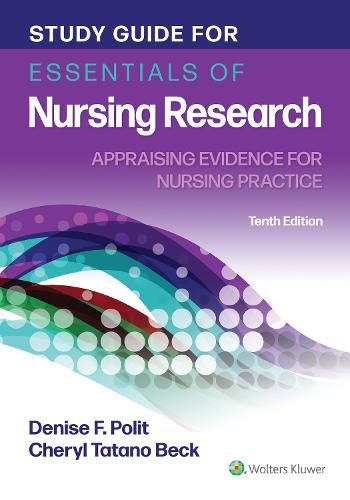Readings Newsletter
Become a Readings Member to make your shopping experience even easier.
Sign in or sign up for free!
You’re not far away from qualifying for FREE standard shipping within Australia
You’ve qualified for FREE standard shipping within Australia
The cart is loading…






The study guide provides students with opportunities to reinforce the acquisition of basic research skills through systematic learning exercises-some of which are designed to be fun. Another important feature is that the appendices include multiple research reports in their entirety. The authors have deliberately selected some studies that are directly relevant to evidence-based practice (EBP), such as a study on the results of an EBP implementation project, and two systematic reviews. There are activities in each chapter of the Study Guide (the Application Exercises) geared around these studies. The Study Guide consists of 18 chapters-one chapter corresponding to every chapter in the textbook. Each of the 18 chapters (with a few exceptions) consists of the following content: - Fill in the Blanks. Terms and concepts presented in the textbook are reinforced by having you complete each sentence. All answers are in the back of the book for easy reference and cross-checking. - Matching Exercises. Further reinforcement for key new terms is offered in a matching exercise, which often involves matching the concrete (for example, an actual research hypothesis) with the abstract (e.g., the term for a specific type of hypothesis). Again, answers are in the back of the book. - Study Questions. Each chapter contains two to five short individual exercises relevant to the materials in the textbook. The answers to select study questions are in the back of the book. - Application Exercises. These exercises are geared specifically to helping the student to read, comprehend, and critique nursing studies. In each chapter, the application exercises focus on two of the studies in the appendices, and for each study there are two sets of questions-Questions of Fact and Questions for Discussion. - Questions of Fact will help the student to read the report and find specific types of information related to the content covered in the textbook. For these questions, there are right answers, which we provide at the back of the book (Appendix I). For example, a question might ask: How many people participated in this study? - Questions for Discussion, by contrast, require an assessment of the merits of various features of the study. For example, a question might ask: Were there enough people participating in this study? The second set of questions can be the basis for classroom discussions.
$9.00 standard shipping within Australia
FREE standard shipping within Australia for orders over $100.00
Express & International shipping calculated at checkout
The study guide provides students with opportunities to reinforce the acquisition of basic research skills through systematic learning exercises-some of which are designed to be fun. Another important feature is that the appendices include multiple research reports in their entirety. The authors have deliberately selected some studies that are directly relevant to evidence-based practice (EBP), such as a study on the results of an EBP implementation project, and two systematic reviews. There are activities in each chapter of the Study Guide (the Application Exercises) geared around these studies. The Study Guide consists of 18 chapters-one chapter corresponding to every chapter in the textbook. Each of the 18 chapters (with a few exceptions) consists of the following content: - Fill in the Blanks. Terms and concepts presented in the textbook are reinforced by having you complete each sentence. All answers are in the back of the book for easy reference and cross-checking. - Matching Exercises. Further reinforcement for key new terms is offered in a matching exercise, which often involves matching the concrete (for example, an actual research hypothesis) with the abstract (e.g., the term for a specific type of hypothesis). Again, answers are in the back of the book. - Study Questions. Each chapter contains two to five short individual exercises relevant to the materials in the textbook. The answers to select study questions are in the back of the book. - Application Exercises. These exercises are geared specifically to helping the student to read, comprehend, and critique nursing studies. In each chapter, the application exercises focus on two of the studies in the appendices, and for each study there are two sets of questions-Questions of Fact and Questions for Discussion. - Questions of Fact will help the student to read the report and find specific types of information related to the content covered in the textbook. For these questions, there are right answers, which we provide at the back of the book (Appendix I). For example, a question might ask: How many people participated in this study? - Questions for Discussion, by contrast, require an assessment of the merits of various features of the study. For example, a question might ask: Were there enough people participating in this study? The second set of questions can be the basis for classroom discussions.